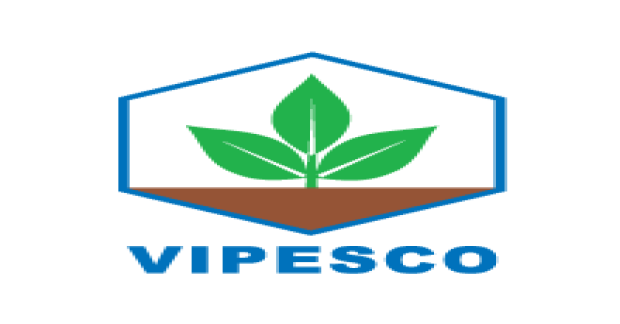Market Size of vietnam biopesticides Industry
|
|
Study Period | 2017 - 2029 |
|
|
Market Size (2024) | USD 15.58 Million |
|
|
Market Size (2029) | USD 24.09 Million |
|
|
Largest Share by Form | Bioherbicides |
|
|
CAGR (2024 - 2029) | 9.11 % |
|
|
Fastest Growing by Form | Bioinsecticides |
Major Players |
||

|
||
|
*Disclaimer: Major Players sorted in no particular order |
Vietnam Biopesticides Market Analysis
The Vietnam Biopesticides Market size is estimated at 15.58 million USD in 2024, and is expected to reach 24.09 million USD by 2029, growing at a CAGR of 9.11% during the forecast period (2024-2029).
15.58 Million
Market Size in 2024 (USD)
24.09 Million
Market Size in 2029 (USD)
1.88 %
CAGR (2017-2023)
9.11 %
CAGR (2024-2029)
Largest by Form
31.66 %
value share, Bioherbicides, 2023
Bioherbicides are weed control agents that are biological in nature. Bioherbicides contains invasive genetics that can attack and kill the weeds' defense genetics.
Fastest by Form
10.54 %
Projected CAGR, Bioinsecticides, 2024-2029
Bioinsecticides are naturally occurring substances derived from various sources, highly effective in small quantities, and only affect target pests with low toxicity.
Largest by Crop Type
58.96 %
value share, Horticultural Crops, 2023
Horticultural crops are consuming more biopesticides in their cultivation compared to other crops, bioherbicides are the most consumed pesticides in the horticultural sector.
Fastest by Crop Type
9.12 %
Projected CAGR, Cash Crops, 2024-2029
Tea, tobacco, rubber, pepper, cashews, soya beans, and coconut are major crops grown in Vietnam. Biopesticides consumption value in cash crops accounted for 35.5% in 2022.
Leading Market Player
1.74 %
market share, Vipesco, 2022

The company offers wide range of biological plant protection products like biofungicides and bioinsecticides to customers, which target a wide range of crop pests.
- Biopesticides are crop protection products that are safe to use and are based on microorganisms, plant extracts, and other natural compounds. They have a variety of appealing properties for integrated pest management (IPM). Biopesticides encourage the growth of beneficial microorganisms while controlling harmful pests. According to FAO, agricultural pests cause up to 40.0% of crop loss annually.
- Bioherbicides dominate the biopesticides market in the country, and they accounted for a share of 31.5% in 2022. In Vietnam, some genera used as bioherbicides are Colletotrichum, Fusarium, Alternaria, Cercospora, Puccinia, Entyloma, Ascochyta, and Sclerotinia.
- Agroecology policies are developed in Vietnam in order to promote particular agroecological practices like agroforestry, integrated pest management (IPM), integrated crop management (ICM), standardization of agricultural practices organic production, food safety control, and conservation and landscape agriculture policies.
- IPM and ICM are intended to assist farmers in understanding the field ecology, using suitable farming techniques, managing the production system effectively, growing healthy crops, and using fewer pesticides and fertilizers in fields. These policies are expected to propel the biopesticides market in the country.
- Pesticide Action Network (PAN) Asia Pacific (PANAP) is a global organization working to eliminate the harm that pesticide usage causes to people and the environment and advance ecological agriculture based on biodiversity. This program also raises awareness about the negative consequences of pesticides, which is expected to increase the domestic market value of biopesticides by 68.0% during the forecast period (2023-2029).
Vietnam Biopesticides Industry Segmentation Vietnam Biopesticides Industry Segmentation
Biofungicides, Bioherbicides, Bioinsecticides are covered as segments by Form. Cash Crops, Horticultural Crops, Row Crops are covered as segments by Crop Type.
- Biopesticides are crop protection products that are safe to use and are based on microorganisms, plant extracts, and other natural compounds. They have a variety of appealing properties for integrated pest management (IPM). Biopesticides encourage the growth of beneficial microorganisms while controlling harmful pests. According to FAO, agricultural pests cause up to 40.0% of crop loss annually.
- Bioherbicides dominate the biopesticides market in the country, and they accounted for a share of 31.5% in 2022. In Vietnam, some genera used as bioherbicides are Colletotrichum, Fusarium, Alternaria, Cercospora, Puccinia, Entyloma, Ascochyta, and Sclerotinia.
- Agroecology policies are developed in Vietnam in order to promote particular agroecological practices like agroforestry, integrated pest management (IPM), integrated crop management (ICM), standardization of agricultural practices organic production, food safety control, and conservation and landscape agriculture policies.
- IPM and ICM are intended to assist farmers in understanding the field ecology, using suitable farming techniques, managing the production system effectively, growing healthy crops, and using fewer pesticides and fertilizers in fields. These policies are expected to propel the biopesticides market in the country.
- Pesticide Action Network (PAN) Asia Pacific (PANAP) is a global organization working to eliminate the harm that pesticide usage causes to people and the environment and advance ecological agriculture based on biodiversity. This program also raises awareness about the negative consequences of pesticides, which is expected to increase the domestic market value of biopesticides by 68.0% during the forecast period (2023-2029).
| Form | |
| Biofungicides | |
| Bioherbicides | |
| Bioinsecticides | |
| Other Biopesticides |
| Crop Type | |
| Cash Crops | |
| Horticultural Crops | |
| Row Crops |
Vietnam Biopesticides Market Size Summary
The Vietnam biopesticides market is experiencing significant growth, driven by the increasing adoption of eco-friendly agricultural practices and the rising demand for organic produce. Biopesticides, which are derived from natural sources such as microorganisms and plant extracts, play a crucial role in integrated pest management by promoting beneficial organisms while controlling pests. The market is primarily dominated by bioherbicides, with various genera like Colletotrichum and Fusarium being utilized. Government initiatives and policies aimed at promoting agroecological practices, such as integrated pest and crop management, are expected to further boost the market. Additionally, organizations like the Pesticide Action Network Asia Pacific are raising awareness about the adverse effects of chemical pesticides, which is anticipated to enhance the market's domestic value.
Vietnam's organic agriculture sector is also on the rise, supported by national policies and programs that encourage organic farming and certification. The country aims to expand its organic farmland significantly by 2030, with a focus on fruit, vegetable, and cash crop cultivation. Despite the higher costs associated with organic products, there is a growing consumer interest in organic foods, driven by health and safety concerns. This shift in consumer behavior is expected to increase the demand for organic protection and nutrition products, thereby fostering growth in the biopesticides market. The market remains fragmented, with key players like Corteva Agriscience and Marrone Bio Innovations Inc. actively participating in the region.
Vietnam Biopesticides Market Size - Table of Contents
-
1. MARKET SEGMENTATION (includes market size in Value in USD and Volume, Forecasts up to 2029 and analysis of growth prospects)
-
1.1 Form
-
1.1.1 Biofungicides
-
1.1.2 Bioherbicides
-
1.1.3 Bioinsecticides
-
1.1.4 Other Biopesticides
-
-
1.2 Crop Type
-
1.2.1 Cash Crops
-
1.2.2 Horticultural Crops
-
1.2.3 Row Crops
-
-
Vietnam Biopesticides Market Size FAQs
How big is the Vietnam Biopesticides Market?
The Vietnam Biopesticides Market size is expected to reach USD 15.58 million in 2024 and grow at a CAGR of 9.11% to reach USD 24.09 million by 2029.
What is the current Vietnam Biopesticides Market size?
In 2024, the Vietnam Biopesticides Market size is expected to reach USD 15.58 million.

